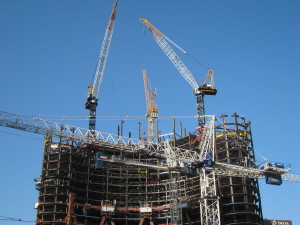 Things change rapidly on construction projects: the site changes; the weather changes; personnel and equipment change; the design changes. Impacts and challenges occur that must be overcome. The original plan for the project may quickly become obsolete. As a result, on nearly all construction projects the schedule needs to be updated on a regular basis to ensure that it reflects the team’s current plan for completing the project.
Things change rapidly on construction projects: the site changes; the weather changes; personnel and equipment change; the design changes. Impacts and challenges occur that must be overcome. The original plan for the project may quickly become obsolete. As a result, on nearly all construction projects the schedule needs to be updated on a regular basis to ensure that it reflects the team’s current plan for completing the project.
This article provides a step-by-step method for updating and modifying a construction project schedule to reflect the current project status.
Why schedules are updated
Schedules are updated at regular intervals in order to:
- Evaluate a project’s status
- Predict the completion date
- Create a historical record of the project
The most important reason for a schedule is to track and monitor project status. The status of each activity should be evaluated independently in order to serve as the basis of evaluating the project’s overall status.
Almost all construction projects require that the project be substantially completed by a specified date or within a specified duration of calendar days. If a contractor fails to complete the project on time, the contractor may be charged liquidated damages or be liable for actual damages for each day the project is late. Thus, it is very important that the team know the currently-forecasted completion date so that the plan can be adjusted as necessary to mitigate delayed completion.
Historical update information can be used as a basis to plan and schedule future projects. It can also be a useful in a claims situation or if a forensic schedule analysis is needed to analyze and identify liability for project delays.
Establishing a baseline schedule
In order to be meaningful, there has to be an official baseline schedule to compare against in order to determine a project’s status. The baseline schedule is the starting point in preparing a schedule’s update. The current baseline is the contemporaneous schedule in effect since the last time the schedule was updated. The baseline schedule is the schedule that progress and the affect of changes since the last update are measured against and analyzed.
Frequency of updates
The frequency of updates should be determined by:
- The project’s complexity
- The frequency of unexpected events
- As specified by the contract
The more complex a project, the greater need for more frequent updates. Complex projects have more entities working at the same time, thus they require more coordination.
When an unexpected event occurs that will impact the ability to complete the project on time, the schedule should be updated. The updated schedule will become a valuable tool in order to develop strategies to overcome and mitigate the impact of the unexpected event.
At a minimum, the schedule should be updated as specified in the contract documents. For most projects, the schedule is updated monthly to correspond with the contractor’s pay applications. Monthly updates are normally sufficient, however some sophisticated owners require weekly or bi-monthly schedule updates.
Carolina Consultants seeks to educate and inform by way of our blog. We choose such topics because we know them, inside and out. If you have further questions about how to update a project’s schedule, this post will be continued in Part 2, where we outline the step-by-step procedures.. We’re also available via phone and form for your questions or comments!


No Responses to “How to Update a Construction Schedule – Part 1”